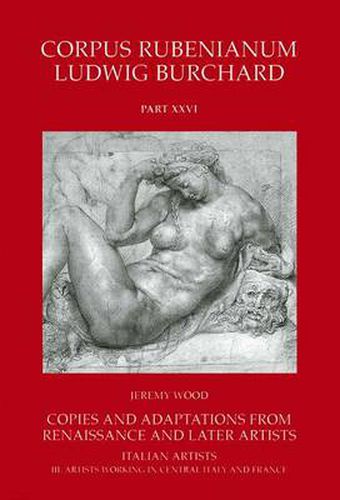Readings Newsletter
Become a Readings Member to make your shopping experience even easier.
Sign in or sign up for free!
You’re not far away from qualifying for FREE standard shipping within Australia
You’ve qualified for FREE standard shipping within Australia
The cart is loading…






This section of the Corpus Rubenianum is concerned with Rubens’s remarkable study of past art as revealed by his numerous copies and adaptations from Italian sources. The material is so extensive that it has been divided into three separate volumes covering (I) Raphael and his School, (II) Titian and North Italian artists, and (III) artists who worked in Central Italy as well as in France. Rubens’s study of the Cinquecento lasted throughout his life and was not just the focus of his early years in Antwerp when he learned his craft and often used prints and copy drawings as models. Perhaps surprisingly, Rubens made relatively few drawings directly from paintings while in Italy between 1600 and 1608, although some survive after frescoes that he saw on his travels. Instead, Rubens was a rapacious collector of Italian drawings, both working studies and journeyman records. He kept them in his cabinet in Antwerp, and took them out from time to time to retouch and rework them so that they became his own. By this means he was able to return to the art of Italy long after he had left that country. Ruben’s most important painted copies were also made late in his career, in 1628-30 when he had travelled to Madrid and London and was in his fifties, a point when many artists would have thought they no longer needed to study. These replicas may have been made because he could not buy the originals for his collection, but they also reveal the thoroughness of his dialogue with Italian art. In total, this material amounts to the largest group of painted and drawn copies by any late Renaissance painter.
$9.00 standard shipping within Australia
FREE standard shipping within Australia for orders over $100.00
Express & International shipping calculated at checkout
This section of the Corpus Rubenianum is concerned with Rubens’s remarkable study of past art as revealed by his numerous copies and adaptations from Italian sources. The material is so extensive that it has been divided into three separate volumes covering (I) Raphael and his School, (II) Titian and North Italian artists, and (III) artists who worked in Central Italy as well as in France. Rubens’s study of the Cinquecento lasted throughout his life and was not just the focus of his early years in Antwerp when he learned his craft and often used prints and copy drawings as models. Perhaps surprisingly, Rubens made relatively few drawings directly from paintings while in Italy between 1600 and 1608, although some survive after frescoes that he saw on his travels. Instead, Rubens was a rapacious collector of Italian drawings, both working studies and journeyman records. He kept them in his cabinet in Antwerp, and took them out from time to time to retouch and rework them so that they became his own. By this means he was able to return to the art of Italy long after he had left that country. Ruben’s most important painted copies were also made late in his career, in 1628-30 when he had travelled to Madrid and London and was in his fifties, a point when many artists would have thought they no longer needed to study. These replicas may have been made because he could not buy the originals for his collection, but they also reveal the thoroughness of his dialogue with Italian art. In total, this material amounts to the largest group of painted and drawn copies by any late Renaissance painter.